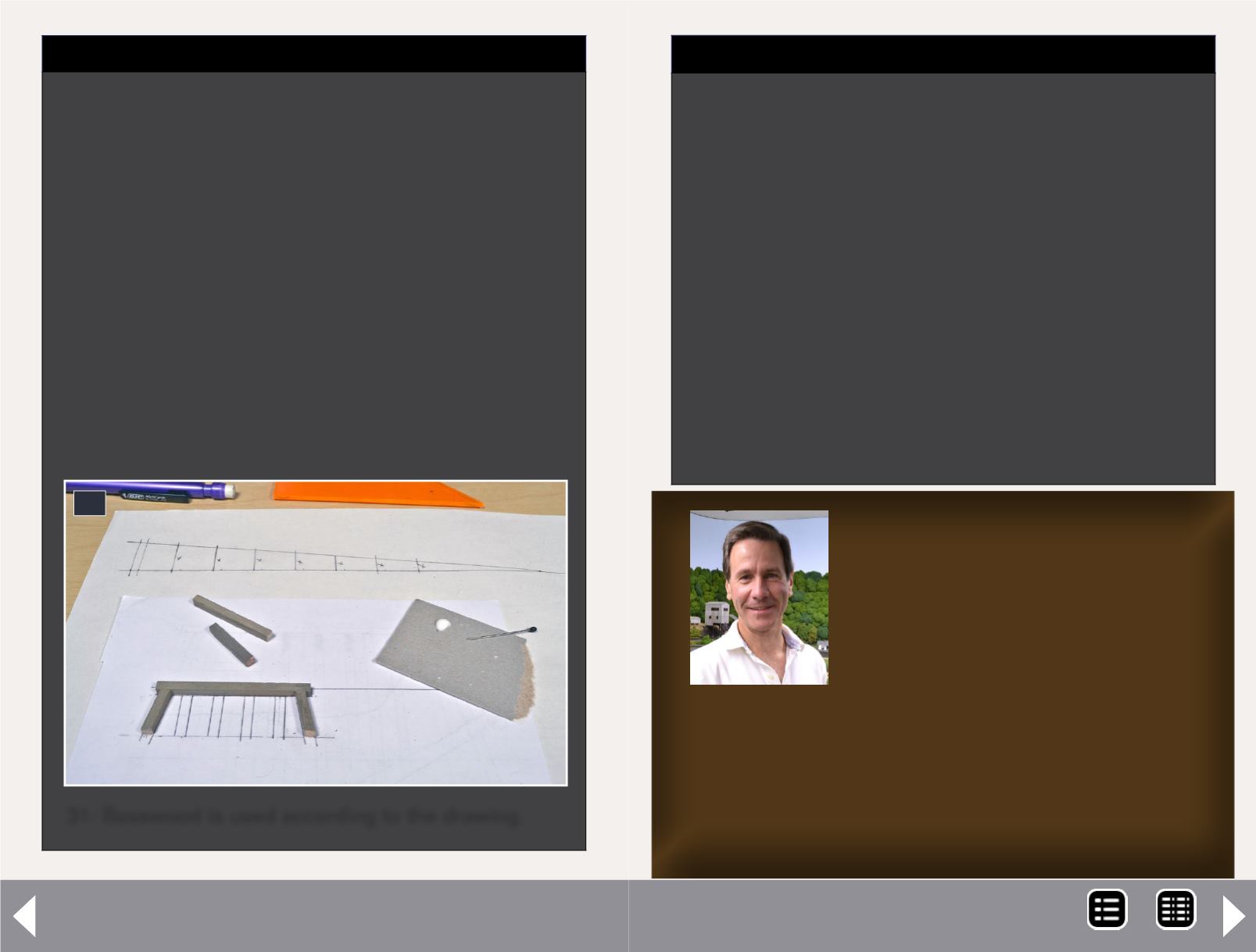
-
STEP 10: The Receiving Ramp
Continued ...
Begin by staining a number of pieces of scale 12” x 12”, 4” x
10”, 2” x 6” and 4” x 4” with the light grey color. Once the light
grey is dry, I put some of the black stain in a small container,
dilute it little bit more with water, and then lightly brush it
onto the wood pieces. The objective is to get a weathered grey
color similar to that in the photo of Tipple 52.
Next, print the bent drawing shown in Drawing 5 and tape it
to a flat surface. Use this template to construct all of the bents
supporting the ramp. Cut pieces of the 12” x 12” to match the
top timber and the posts using the template. The photo here
(31) shows the bent template laid out along with the cap and
the two end posts glued in place.
I use the small piece of cardboard and the pin in the photo
(31) to apply small amounts of white glue to the ends of the
posts. The photo (31) also shows the profile of the ramp that I
drew in order to determine the height of the successive bents.
Tom Patterson got his start in model
railroading with a Lionel train set at
Christmas back in the ‘60s. That train
set eventually became part of his first
layout. Tom reentered model rail-
roading in the late ‘70s and has been
working on his current layout, the HO
scale Chesapeake, Wheeling and Erie
Railroad, a free-lanced coal hauler set in West Virginia, for
almost 20 years.
Tom and his wife have two grown children and live in
Cincinnati, Ohio. They enjoy hiking, biking, reading and
spending time with their family, which includes two res-
cue mutts and a large number of salt water fish.
-
STEP 10: The Receiving Ramp
Continued ...
I used scale pieces of basswood for construction of the ramp
as I like the look of the wood when it’s stained in appropri-
ate colors. You could easily substitute styrene for this por-
tion of the structure, and there are numerous techniques
that can be used to make the plastic look very convincingly
like wood.
If you’re using basswood, it’s imperative that you stain it
before applying any glue. Otherwise, you will end up with
areas where the glued dried that won’t take the stain. For
my stains, I used two basic colors: 1) a light grey made up of
a 50:50 mix of Floquil Poly S Primer and water with a drop
of liquid detergent added; and 2) a grimy black made from
a 50:50 mix of Floquil Poly S Grimy Black and water with a
drop of liquid detergent added.
31: Basswood is used according to the drawing.
31
Coal loader, p2 - 2
MRH-Jan 2013


